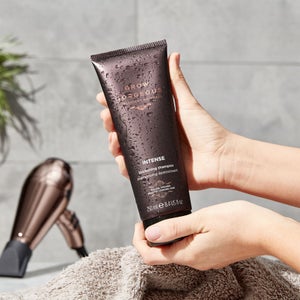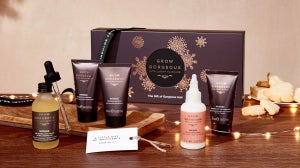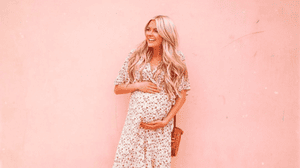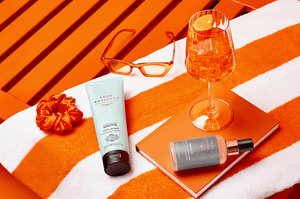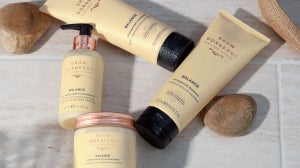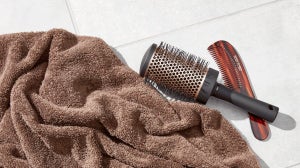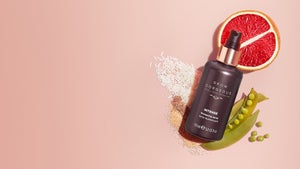
You may be familiar with the fact that the haircare world is getting slightly, well, complex. Curly-haired girls are proudly claiming the pattern their strands fall under, from the loose wave of 3A to a tight 4C coil. Meanwhile, those with dead straight 1A strands are establishing whether their hair has a high or low porosity. Haircare is quite clearly rapidly evolving. Therefore, it can be expected that we all know the difference between fine vs thin hair by now, don't we? Two words that according to the dictionary, can be used interchangeably, many of us have lived our lives presuming that fine vs thin hair is essentially the same thing. We're here to tell you otherwise. They are, in fact, two very different hair types.
It's time to take it back to basics. Here's all you need to know about fine vs thin hair.
https://poll.fm/11199368
What is fine hair?
So to begin, what is fine hair? It's often used to describe a head of hair that has a thin number of strands, but this is incorrect. What fine hair refers to is the actual width of each individual hair follicle on your head.
Therefore, with fine hair, you can still have plenty of strands on your head. However, when this hair is made up of strands that have narrow and small hair follicles, the result is hair that looks and feels limp and lacking in volume. The size of the hair follicle is all down to genetics. If your parents have fine hair, it's likely you have it too.
What is thin hair?
What fine hair is has been clarified. So, what is thin hair?
Unlike fine hair, what thin hair is refers to the number of total hair strands on your scalp. In other words, the actual amount of hair you have. You may notice that you have thin hair all of a sudden, from visible gaps in your scalp to a lighter-looking ponytail.
Thin vs thinning hair
Thinning hair is the actual process of the amount of hair on your scalp decreasing. It's usually linked to the very natural process of aging. However, as we age, our hair strands can start to shrink in diameter too, at which point fine vs thin hair becomes fine and thin hair.
It’s normal to part with about 50-100 hairs throughout the day. However, if you notice some significant shedding with sparser areas appearing on your scalp, there may be a few external causes of your hair thinning.
It is not just aging that can cause the hair to thin. It can be caused by depriving your hair of the love and care it deserves. Are you scraping it back into a tight, uncomfortable ponytail or using heated tools every day? Plus, using products filled with sulfates can be incredibly harsh and harmful to your hair's strands. Always look for products that are free from parabens, sulfates, and silicones.
Best products for fine hair
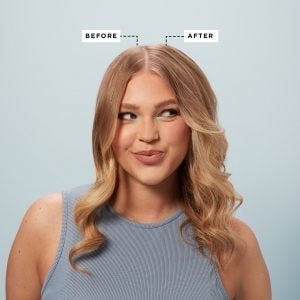
While some of the best products for thin hair can actively support its growth, the fineness of your strands is your genetic hair type. Therefore, the best products for fine hair are those which help it to look as voluminous and as bouncy as possible.
Luckily, there are some GG products that can do just this!
Firstly, we would recommend shampooing and conditioning with our Volume Duo.
What makes this duo two of the best products for fine hair are the ingredients it contains. In particular:
Amaranth Seed Extract: increases the hair's diameter, resulting in thicker-looking strands with increased body and bounce
Pea Peptides: with film-forming and conditioning properties, smooth and create extra revival for flat hair
Caffeine: wakes up the roots with a stimulating boost
Once your wash and condition has been finished, you can fast-track your way to a volume boost with a lightweight, fragrant mist. The Intense Thickening Spray works its magic as soon as you style, enhancing hair to create a visibly thicker look and instantly adding a gorgeous, bouncy body.
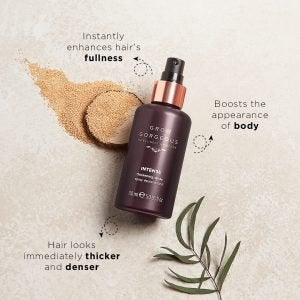
Best hair products for thin hair
One of the best hair products for thin hair actually does not actually target the strands, but the scalp. It's essential to wipe the scalp clear of build-up and give it a regular refresh for the hair to grow to its full potential. Try the Defence Detoxifying Scalp Scrub to lay the foundation for your strands to flourish. This scrub works to exfoliate away any accumulation of dead skin, oil, and product that clogs the follicle and stunts the growth of new, strong hairs.
With a squeaky clean scalp, you can then move on to use a shampoo and conditioner designed specifically to be the best hair products for thin hair, such as Our Intense Duo. Don't believe us? Our bestselling caffeine-powered cleanser has even been crowned the ‘Best Shampoo for Hair Growth’ by The Independent!
As a final step, massage the Hair Growth Serum Intense into your strands and scalp. Not only does a scalp massage improve blood flow to encourage growth at the bottom of the hair follicle, the serum works to improve the condition of the follicle and restore root vitality with unique ingredients like Organic Pea Sprout Extract and Chinese Scullcap.
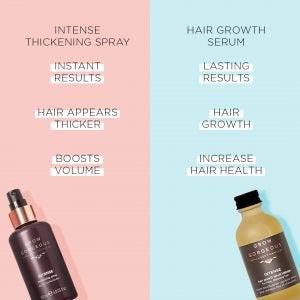
With fine vs thin hair, it’s important to remember that there are differences between the two. To recap, fine hair refers to the thickness while thin hair refers to the amount of hair on your head. You have now mastered the basics, feel free to proceed to learn about your hair's porosity!
Shop This Post:


